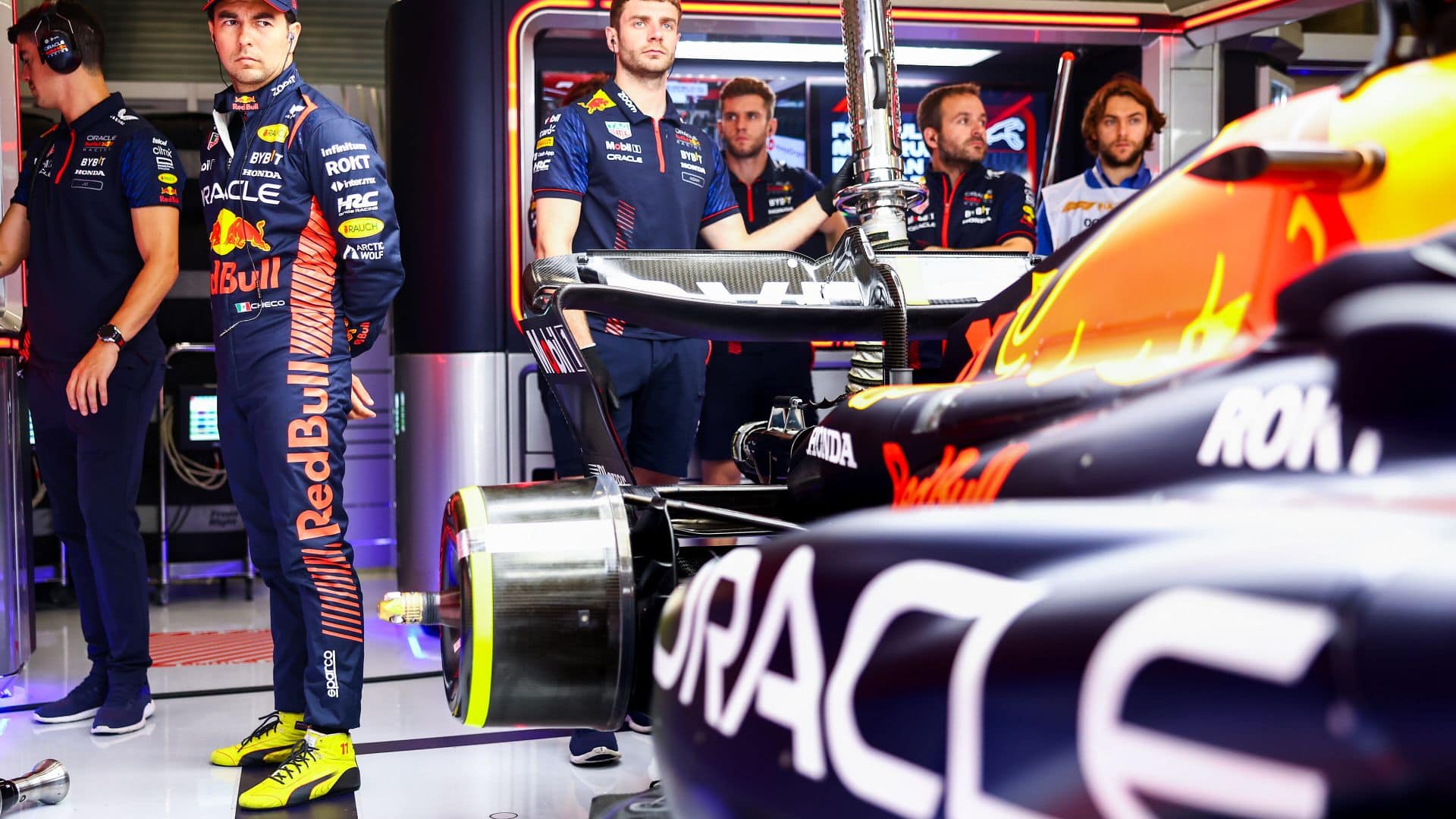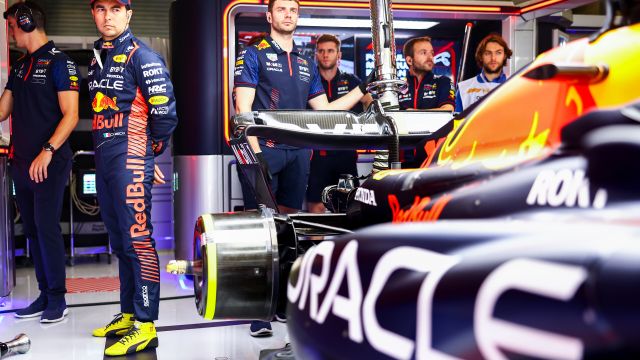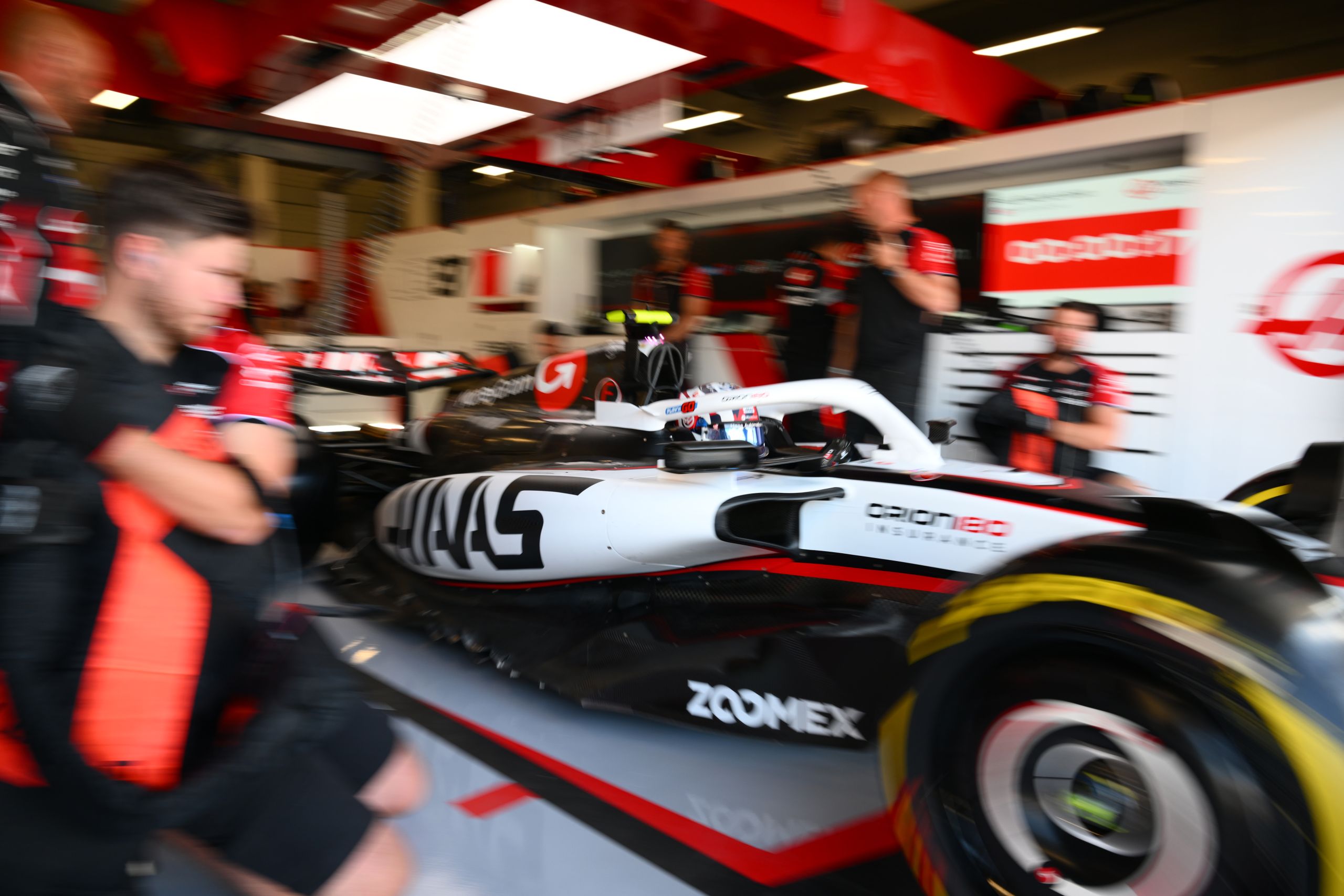What Is ERS In F1? An In-Depth Guide to Energy Recovery Systems


Ever found yourself watching a Formula 1 race and wondered, ‘What is ERS in F1?’ If so, you’re not alone. Understanding the intricate details of the Formula 1 cars used by the likes of Max Verstappen and Charles Leclerc can be a daunting task, but it’s this complexity that sets F1 apart from many other sports.
ERS, or the Energy Recovery System in Formula 1, is an advanced technology that recovers energy that would otherwise be lost during braking and converts it into power. This power is stored and can be used to enhance the car’s performance during the race.
In this article, we will delve deeper into the concept of ERS, its workings, the impact on a Formula 1 car’s performance, and the rules governing its usage. By the end of this read, you will have a comprehensive understanding of this fascinating piece of technology that plays a critical role in the exhilarating world of F1 racing.
Understanding ERS in F1
Components of ERS F1
ERS, or Energy Recovery System, in Formula 1 (F1) is a vital part of the car’s power unit (PU) that has two main components: the Motor Generator Unit – Kinetic (MGU-K) and the Motor Generator Unit – Heat (MGU-H). The energy storage, known as the ES, is a high-capacity lithium-ion battery.
- MGU-K: This component converts the car’s kinetic mechanical energy during braking into electrical energy. This energy is then stored in the ES.
- MGU-H: The MGU-H recovers thermal energy from the exhaust gases produced by the turbocharged engine. This energy is also stored in the ES to be used later.
The ERS works seamlessly with the internal combustion engine (ICE) to provide drivers with additional power and increased efficiency.
Working Mechanism
The ERS in Formula 1 cars is a sophisticated system designed to harness waste energy and convert it into useful power. Here’s how it works:
The MGU-K captures kinetic energy mainly during braking. As the F1 car slows down, the kinetic energy is first absorbed and then transformed into electrical energy. This energy is sent to the ES for storage.
Simultaneously, the MGU-H recovers heat energy from the exhaust gases produced by the turbocharged engine. As the exhaust gases flow through the turbine, they generate electrical energy, which is also stored in the ES.
When the Formula 1 driver requires an additional boost of power during the race, they can deploy the stored energy in the ES. It provides an extra 160 horsepower to the engine, which, in combination with the ICE, can produce up to 870 horsepower.
The ERS is a complex system that significantly impacts the result of a race, as it allows F1 drivers to access additional power more efficiently. It is essential for F1 teams and drivers to manage their energy resources and strategically deploy ERS for optimal performance during an F1 race.
Impact on Performance
Acceleration
ERS technology has a significant impact on the performance of Formula 1 cars, especially in terms of acceleration. It allows drivers to harness additional energy that would otherwise be wasted, creating a temporary power boost at strategic points during races. This extra surge of energy enables the cars to accelerate more quickly, giving drivers the ability to quickly close gaps or pull away from competitors as needed.
Overtaking and Defending
The ability to strategically deploy ERS energy boost not only enhances acceleration but also aids in overtaking and defending during races. The extra power can be used to create opportunities for passing other drivers or to defend a position on the track. Moreover, it helps in reducing the time spent behind a slower car, minimizing the negative impact on a driver’s race strategy.
For overtaking, a driver can deploy the additional ERS energy during a straight section of the track or just before entering a corner, enabling them to carry more speed and overtake their competitor more effectively. On the other hand, when defending a position, using ERS can help maintain a higher speed, making it difficult for other drivers to pass.
Top Speed
The integration of ERS technology within F1 cars has also contributed to increasing their top speed. By recovering energy from braking and the car’s exhaust system, the ERS provides an additional power source that can be utilized to push the car’s performance to its limits.
Furthermore, the ERS system can help reduce turbo lag, which is the delay in power delivery as the turbocharger builds boost. By quickly providing a power boost when needed, ERS helps maintain optimal performance throughout the race, reducing the negative impact of turbo lag, and ultimately improving the car’s top speed.
In conclusion, the ERS system employed in Formula 1 cars has a notable impact on their overall performance, having positive effects on acceleration, overtaking and defending, and top speed. By strategically deploying the extra energy harnessed by the ERS, the drivers can maintain a competitive edge throughout a race and enhance their chances of success.
ERS in Formula 1 Cars
Power Units
Formula 1 cars consist of complex power units with various components working together to produce efficient power output. One such component is the Energy Recovery System (ERS), which works alongside the internal combustion engine (ICE) and other elements, such as the Motor Generator Unit-Heat (MGU-H) and Motor Generator Unit-Kinetic (MGU-K). The ERS plays a critical role in enhancing the car’s performance by harvesting and utilizing energy that would otherwise be lost.
- MGU-H: This component captures thermal energy from the car’s exhaust and turbocharger. It converts the heat energy into electrical energy that can be stored in the battery or used directly by the power unit.
- MGU-K: Evolved from the original Kinetic Energy Recovery System (KERS), MGU-K recovers kinetic energy during braking, converting it into electrical energy to be stored or used by the power unit.
Together, these two systems allow the ERS to generate and provide an additional 160 horsepower to the Formula 1 car’s power unit.
Circuit and Activation Zones
While racing, ERS and DRS (Drag Reduction System) work in tandem to improve Formula 1 car performance on the circuit. The activation of these systems occurs in specific zones of the circuit, known as DRS zones. Once a driver is within one second of the car in front, the DRS can be deployed, reducing drag and providing a higher top speed.
In addition to DRS, ERS deployment is regulated. The systems must be managed effectively over the race to balance the available energy and the car’s fuel consumption. Using ERS effectively can result in better overall performance on the circuit by providing additional power when needed.
ERS Evolution
Since its introduction, ERS technology has continued to evolve. The development of MGU-H and MGU-K has enabled more efficient energy harvesting and utilization. As a result, Formula 1 cars have reduced fuel consumption, allowing them to compete at higher speeds and cover longer distances during races without sacrificing performance.
The continued advancements in ERS, along with other power unit components, ensure that Formula 1 remains at the cutting edge of automotive technology, paving the way for more sustainable and efficient racing in the future.
Advanced Technologies
Energy Storage
F1 cars use advanced energy storage systems to provide extra bursts of power when needed. Typically, these systems utilize lithium-ion batteries that weigh around 20 kilograms and are located in the fuel cell. These batteries store energy generated from the Energy Recovery System (ERS) and can efficiently deliver power output to improve performance.
Energy Harvesting
Formula 1 cars employ two different types of energy harvesting systems, both of which are part of the ERS. The first is the MGU-H, which harvests thermal energy from the car’s exhaust/turbo system. The second is the MGU-K, an evolution of the original Kinetic Energy Recovery System (KERS). These systems work together to capture and store energy generated during a race, making F1 cars more fuel efficient and environmentally friendly.
F1 and Electric Cars
With a greater focus on sustainability and efficiency in automotive technology, Formula 1 racing is adapting to the changing landscape. FIA regulations have been introduced to encourage teams to develop more fuel-efficient cars, while the ERS works to reduce fuel consumption and enhance performance. The integration of ERS in F1 cars offers key insights into advancements being made in electric motor car development as well.
Drag Reduction System
Formula 1 racing also employs the Drag Reduction System (DRS) to optimize car performance. This system allows drivers to temporarily reduce the car’s aerodynamic drag at certain parts of the Grand Prix circuit, resulting in increased acceleration and top speed. DRS works hand-in-hand with the ERS to provide strategic advantages to drivers throughout the race, while also complementing the sustainability objectives of Formula 1.
The Rules and Regulations Surrounding ERS in F1
Formula 1 is a sport known for its stringent regulations and the ERS is no exception. Introduced in 2014, the ERS system is subject to detailed specifications and rules to ensure a level playing field.
Firstly, it’s important to note that not all energy recovered can be used immediately. The FIA regulations stipulate that only 2 Megajoules (MJ) of energy can be deployed per lap directly from the MGU-K to the drivetrain. Any additional energy must be stored in the Energy Store (ES) before it can be utilized.
On the flip side, there are no restrictions on the amount of energy that the MGU-H can transfer to the MGU-K or ES. This gives teams some room for strategic maneuvering during races. Additionally, while the MGU-K is limited to recovering only 2 MJ of energy per lap, the MGU-H’s recovery is unrestricted.
The Nuances of ERS: A Game Changer in F1
Understanding the ERS system adds an extra layer of intrigue to Formula 1 racing. Not only does it highlight the incredible technological innovations in the sport, but it also underscores the strategic thinking that goes into every race.
Teams must work out how to best harvest and deploy energy for optimal performance. This includes decisions on when to utilize the additional power during a race, how to manage the system to prevent overheating, and even the best way to set up the car to maximize energy recovery.
The ERS also has implications for fuel efficiency, with the system’s ability to generate electrical power contributing to a reduction in the total amount of fuel a car can use during a race.
How ERS Has Evolved Over Time
Since its introduction in 2014, the ERS has seen significant development. Initially, the system had its teething issues, with teams struggling to manage the complex technology. Overheating was a common problem, and balancing recovery with deployment proved challenging.
However, as understanding of the technology has grown, so too has its reliability and effectiveness. In the hands of skilled engineers and drivers, the ERS has become a powerful tool that can make the difference between winning and losing a race.
We’ll continue to delve deeper into the intricacies of the ERS in the following sections, exploring how the drivers interact with the system and its potential future in Formula 1.
F1 Driver Interaction with ERS
Unlike its predecessor, the KERS system, the ERS in modern Formula 1 is largely controlled by the car’s onboard computer systems. The days of drivers manually deploying a ‘boost’ button are gone. Instead, the computer uses algorithms to decide when and how to use the energy stored in the ES.
However, that doesn’t mean the driver is completely out of the loop. In fact, the drivers play a crucial role in managing the ERS. They can select different engine modes, which adjust how aggressively the ERS is used. These modes can affect everything from fuel efficiency to power output, adding another strategic element to the race.
Moreover, drivers need to handle the car differently when the ERS is deploying its power. The sudden surge can affect the car’s balance, particularly under acceleration out of a corner. This requires skill and finesse from the driver to manage effectively.
The Impact of ERS on Race Strategy
The introduction of the ERS has added another layer to race strategy in Formula 1. Teams have to plan when and where to deploy the stored energy for maximum effect. This can depend on various factors, including track layout, weather conditions, and even the particular driving style of a driver.
For example, on a high-speed track with long straights, it might be advantageous to save up energy in the ES for a significant power boost. On a tighter, twisty circuit, frequent, smaller boosts might be more beneficial.
The ERS also affects how teams manage their tires and fuel. The extra power can put additional strain on the tires, leading to increased wear. Conversely, the system’s energy recovery can improve fuel efficiency, allowing teams to run lighter and therefore faster.
ERS and the Future of Formula 1
As Formula 1 continues to strive for greener and more sustainable practices, the ERS is likely to play a key role in the sport’s future. The technology aligns with the global shift towards electrification and represents an exciting avenue for further development.
There’s been speculation about the potential for an all-electric Formula 1 championship, and while that may be some way off, the ERS is a clear step in that direction. What’s more, the technology developed in F1 often trickles down to road cars, so advancements in ERS technology could have far-reaching implications for the wider automotive industry.
The ERS system in F1 is a sophisticated piece of engineering that adds an extra dimension to the sport. From understanding how it works to appreciating its impact on race strategy, the ERS system is a testament to the innovative and high-tech world of Formula 1.
What is ERS in F1? – Final Thoughts
Throughout this journey into the technological heart of F1, you’ve unravelled the complex mechanisms that breathe life into the sport. The Energy Recovery System, or ERS, isn’t just an impressive display of engineering, it’s an embodiment of F1’s constant pursuit of speed, efficiency, and strategic depth.
The ERS is a fascinating aspect of Formula One that enhances both the performance capabilities of the cars and the strategic considerations for teams. More than just a technical term, it has reshaped the landscape of the sport, transforming how drivers, engineers, and strategists approach each race. This nuanced system highlights the blend of athleticism and technology that makes F1 one of the most thrilling sports in the world.
So, the next time you watch a Formula One race, remember what’s happening beneath the surface. Each time a driver brakes, they’re not just slowing down – they’re harvesting energy. Every burst of speed on the straight isn’t just a press of the pedal – it’s the release of stored power. In the electrifying world of F1, even slowing down is an opportunity to speed up. Keep exploring, keep questioning, and you’ll find that there’s always more to learn and love about this remarkable sport.
What is ERS in F1? – Frequently Asked Questions
What are the ERS F1 rules?
In Formula 1, the Energy Recovery System (ERS) is governed by a set of rules to ensure fair and consistent performance. The two main components of ERS, the MGU-K and MGU-H, have specific energy limits. The MGU-K is limited to recovering 2 MJ per lap and the MGU-H can recover unlimited thermal energy. The total power output of ERS cannot exceed 4 MJ per lap. Additionally, the ERS must be implemented within the constraints of the F1 car’s design and engine regulations.
How does ERS differ from DRS in F1?
ERS and DRS are distinct systems in an F1 car. ERS refers to the Energy Recovery System that harvests energy from the car’s braking and exhaust gas processes, using the MGU-K and MGU-H components. This energy is stored and later used to provide additional power during acceleration. On the other hand, DRS (Drag Reduction System) is an aerodynamic feature that adjusts the rear wing angle to reduce drag and increase straight-line speed temporarily, assisting with overtaking.
What is the relationship between KERS and ERS?
KERS (Kinetic Energy Recovery System) was a predecessor to ERS in F1. It focused primarily on recovering kinetic energy during braking, using a device similar to the MGU-K in the current ERS. The shift from KERS to ERS marked a transition to a more comprehensive energy recovery system that also includes the MGU-H for thermal energy recovery from the car’s exhaust.
How does ERS battery function in F1?
The ERS battery pack in Formula 1 stores the recovered energy from the MGU-K (Motor Generator Unit Kinetic) and MGU-H (Motor Generator Unit Heat) components. The electrical energy generated through the kinetic and thermal energy recovery processes is stored in the battery. The stored energy can later be deployed as additional power for the car’s engine, enhancing performance during acceleration.
When should F1 drivers use ERS?
F1 drivers typically use ERS to gain a performance advantage during acceleration or while attempting an overtaking maneuver. The additional power from ERS can offer a significant top speed boost on long straights and acceleration out of slow corners. However, drivers must manage their ERS deployment strategically, considering the limitations on its energy recovery and usage per lap.
How much horsepower does ERS provide in F1?
ERS can provide an additional 160 horsepower approximately in F1 cars. The extra horsepower helps boost the car’s performance, particularly during acceleration and while attempting to overtake. Combined with the base engine power, an F1 car’s total power output can reach around 900 to 1000 horsepower.
Does every F1 team use ERS?
Yes, all current F1 cars are equipped with an ERS. It’s a standard part of the technical regulations that has been perfected by the likes of Red Bull Racing, Mercedes, and Aston Martin.





